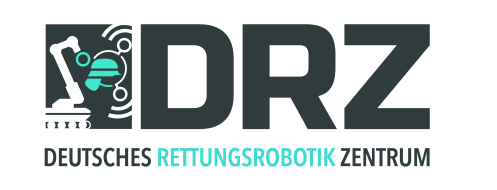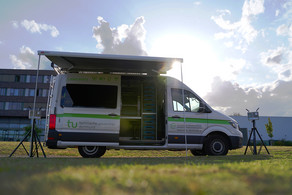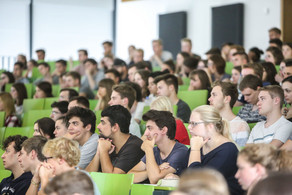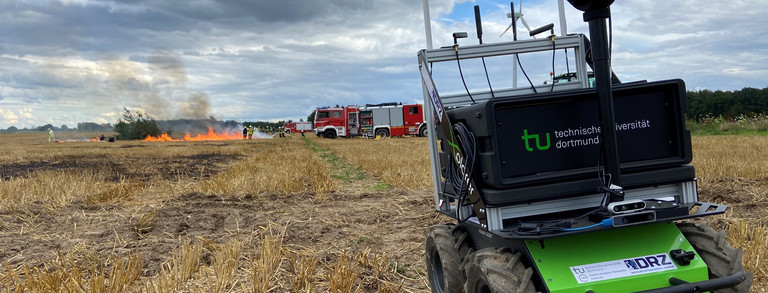DRZ
In their daily work, task forces face a variety of challenges. Despite training, tactical concepts and protective equipment, thousands of emergency personnel are injured or killed worldwide every year. With the advancing technical development, it is foreseeable that mobile robot systems will take over tasks in order to make the operation more efficient and above all safer. The requirements on the supporting rescue robot systems are complex and varied.
Project duration: 01.10.2018 - 30.09.2022 (Phase 1: A-DRZ); 01.10.2022 - 30.09.2026 (Phase 2: DRZ)

The German Rescue Robotic Centre (DRZ) is intended to promote the use of robot systems in civil terrestrial emergency response in hostile environments. Here, the four guiding scenarios of fire, collapse & burial, detection of hazardous substances and flooding as well as the resulting challenges for rescue robotics form the basis. Among other activities, a so-called Living Lab will be set up for this purpose, i.e. a laboratory with an attached test site, in which scientists, companies and users can jointly research the best possible solutions for supporting rescue robots and test them in realistic environments.
The implementation of the DRZ will create a national competence centre with international appeal. For the first time in Germany, emergency forces, researchers and industry will work on the realization of autonomous rescue robots and the establishment of a national and international robotics task force. In addition, test and inspection criteria are developed in order to ensure later standardization and certification of different robot systems. The Communication Networks Institute (CNI) will be in charge of the work on robust wireless networking of robotic systems even under the difficult conditions of a rescue operation.
The project is funded by the German Federal Ministry of Education and Research under the grant agreement number 13N16476.





